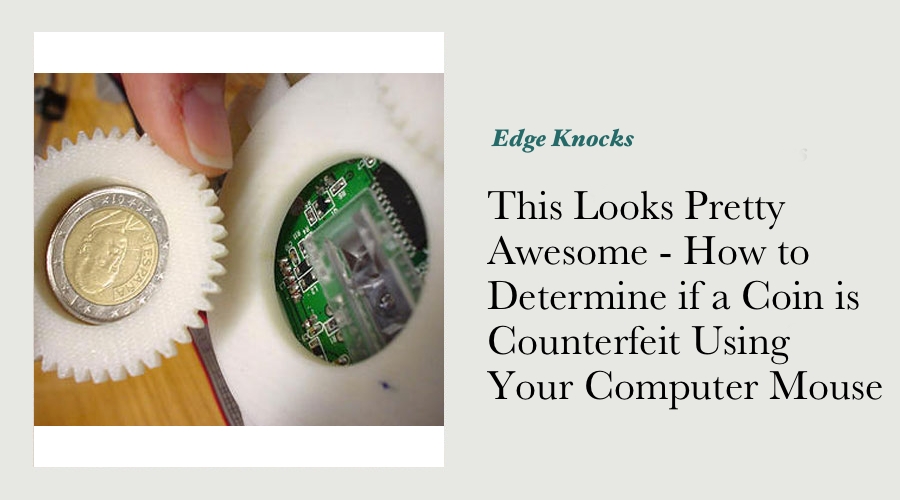This Looks Pretty Awesome - How to Determine if a Coin is Counterfeit Using Your Computer Mouse

I don't know if you keep up with the latest geek trends, but news has come to light recently of a project that some University scientists in Spain have been working on whereby a standard computer mouse can be used to detect counterfeit coins.
According to this article, "The system rotates the coin, sampling its surface using the 30 x 30 [in your mouse] pixel resolution optical sensor. Then it compares it to a stored model, giving you the nay or the yay with more accuracy than anyone, or about the same accuracy as an expert."
In the words of one of the authors: "We have implemented a system of detection of false currencies of two Euros by means of the comparison of landlords obtained with a mouse sensor óptico." (Translation capably provided by Alta Vista's Babel Fish).
Just whether that's the case remains to be seen, as well as the fact as to whether it's as reliable as a detection method for valuable items.
I doubt the specifications of this setup will be made widely known, and even if they are I don't think the method would ever become more than a first-step check for counterfeit detection.
Having said that, I can see a lot of alternative uses for the system within numismatics - discovery of die varieties being one!
Imagine being able to feed a batch of pennies of one date into this puppy, and then having them say yes or no to a particular variety being detected?
Does anyone know how this could be jerry-rigged to work? UDATE (23/11/09): One of our readers has generously provided the following translation from the original article in Spanish: (with thanks to Yahya)
"The sensor that a computer optical mouse incorporates is usually used to guide the cursor displacement, but it can also be used as a detector of fake coins. This is demonstrated by a prototype developed by computer science engineers of the University of Lleida (UdL), whose details can be freely consulted in the scientific magazine Sensors.
“We have implemented a system of fake two-euro coin detection, by comparing patterns obtained with an optical mouse sensor," explains Marcel Tresanchez, one of the authors of the work. According to the European Commission, 79% of the discovered fake coins in Europe in 2008 were of two euros.
To detect the fakes, the coin is placed in a positioning device and rotated. The sensor, located a few millimeters away, is used to capture images of the common face that all two-euro coins have. (They all have a map of Europe on one face, and a specific design for each country on the other.) Finally, the images are compared with reference ones obtained from valid coins, by means of an algorithm that the Catalan team has also developed.
“The same operation could be made with a webcam, for example, but the advantage of these sensors is their small size, low cost and such a narrow angle of view that it lets us capture the coins' relief very simply", Tresanchez emphasizes.
The investigator clarifies that not just any optical mouse sensor will do, since it must capture realtime images, with a minimum resolution of 15x15 pixels – the equipment used has one of 30x30 pixels. In addition, he advises using a sensor based on LED or infrared, not laser, technology, since those provide too detailed images.
The results of the study show that this system, as a complement to forgery detection techniques, already allows better detection of fake coins than a human could do, and at a level similar to that of a trained expert. The authors have also applied the same method to design an “encoder” or rotatory coder, using an optical mouse sensor to compute angular displacement from an axis."